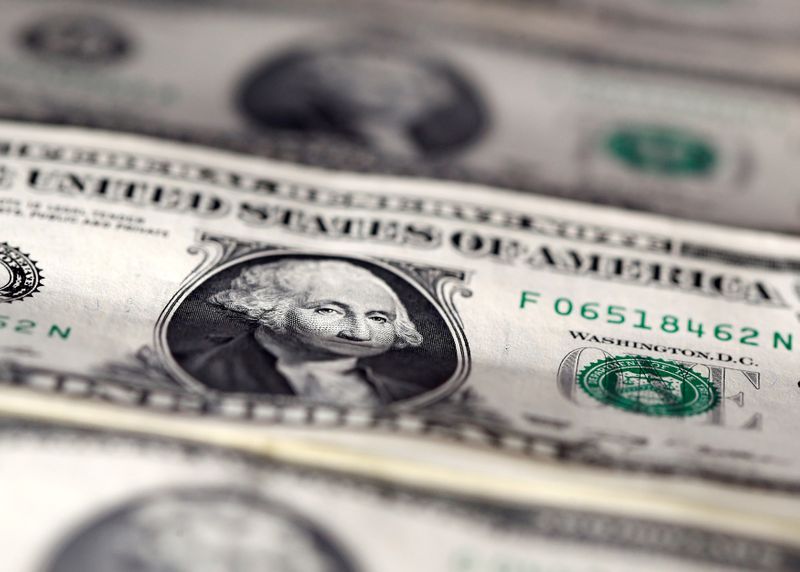NEW YORK (Reuters) – The dollar hit a seven-week low against a basket of currencies on Wednesday after U.S. President Donald Trump and House Speaker Nancy Pelosi boosted hopes for a large fiscal stimulus package, prompting some traders to ramp up bets on riskier currencies.
The U.S. dollar index <=USD> was 0.47% lower at 92.605, its lowest since Sept. 2.
“We’ve entered a secular bear market for the dollar,” said Axel Merk, president and portfolio manager at Merk Hard Currency Fund in Palo Alto, California.
The weakness in the greenback came as the White House and Democrats in the U.S. Congress moved closer to agreement on a new coronavirus-related aid package on Tuesday as Trump said he was willing to accept a large aid bill despite opposition within his own Republican Party.
Pelosi, the nation’s top Democratic leader, later said she was optimistic about chances for a fresh aid deal despite resistance from Senate Republicans, though she acknowledged it might not pass until after the election.
The economic recovery has been uneven and uncertain and will require continued support from the government to ensure it becomes broadbased and sustainable, said Federal Reserve Governor Lael Brainard.
Still, there is a good chance that no large-scale fiscal relief will be passed until the first quarter of next year, if Democrats sweep the Nov. 3 elections, Shaun Osborne, chief FX strategist at Scotiabank in Toronto, said in a note.
The greenback slipped to a four-week low against the yen, with the Japanese currency set to log its best one-day gain since Aug. 28. <JPY=EBS>
“Real interest rates in Japan are the highest in the G10 right now,” said Merk.
As the U.S. economy accelerates, something that might not happen for months or even a year, and the Fed is committed to keeping rates low, real U.S. interest rates are going to go down further, faster than in other countries, Merk said. And with that, the dollar should weaken further.
The riskier New Zealand and Australian dollars both advanced, with the Kiwi up 1.32% and the Aussie up 1.11% versus the greenback.
China’s yuan surged, in both offshore and onshore trading, led by firmer central bank guidance and recent data suggesting a more sustained recovery in the world’s second-largest economy. <CNH=>
Sterling <GBP=D3> vaulted to a six-week high against the U.S. dollar after Britain’s chief Brexit negotiator David Frost said negotiations with the European Union will resume on Thursday afternoon.
“Sterling rallied strongly on the news and further gains can’t be ruled out near term, despite the growing probability that UK interest rates will go negative next year and Westminster abandoning its three-year public spending plans,” ANZ Research said in a note to clients.
(Reporting by John McCrank and Saqib Iqbal Ahmed; Editing by Tom Brown)

























